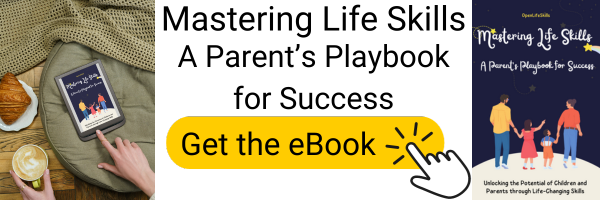Introduction:
In today’s fast-paced and increasingly distracted world, teaching children the art of mindfulness is more important than ever. Mindfulness is the practice of being fully present, aware of our thoughts and emotions, and embracing the present moment without judgment. By introducing children to mindfulness, we empower them with the tools to cultivate inner peace, emotional resilience, and a deeper connection with themselves and others. In this article, we will explore the significance of mindfulness, its impact on children’s well-being, and practical strategies for parents to introduce mindfulness into their children’s lives.
I. Understanding the Importance of Mindfulness
Before we delve into strategies for teaching mindfulness to children, let’s establish a clear understanding of its significance:
- Definition of Mindfulness: Mindfulness is the practice of intentionally paying attention to the present moment, with an attitude of curiosity, non-judgment, and acceptance.
- Importance of Mindfulness:
- Emotional Regulation: Mindfulness helps children develop emotional awareness and regulation skills, fostering resilience and self-control.
- Concentration and Focus: It enhances children’s ability to concentrate, focus, and engage in tasks with greater attention and clarity.
- Stress Reduction: Mindfulness equips children with techniques to manage stress, anxiety, and other challenging emotions.
- Empathy and Compassion: It cultivates empathy and compassion by promoting a non-judgmental attitude and understanding of others.
II. Strategies for Introducing Mindfulness to Children
- Lead by Example:
- Be a role model for mindfulness by practicing it in your own daily life.
- Show your children how to be fully present and engaged in activities without distractions.
- Breathing Exercises:
- Teach your child simple breathing exercises, such as mindful breathing or belly breathing.
- Encourage them to take deep breaths, focusing their attention on the sensations of their breath.
- Mindful Body Scan:
- Guide your child through a mindful body scan, where they focus their attention on different parts of their body, noticing sensations without judgment.
- This exercise helps them develop body awareness and promotes relaxation.
- Mindful Eating:
- Encourage your child to eat mindfully by paying attention to the taste, texture, and smell of the food.
- Teach them to savor each bite and notice the sensations and thoughts that arise during the eating process.
- Sensory Awareness:
- Engage your child in sensory activities that promote present-moment awareness, such as mindful walking in nature, feeling different textures, or listening to calming music.
- Encourage them to engage their senses fully and notice the details of their experience.
- Gratitude Practice:
- Foster a gratitude practice by encouraging your child to reflect on things they are grateful for each day.
- Help them develop an appreciation for the simple joys and blessings in their lives.
- Mindful Listening:
- Teach your child the art of mindful listening.
- Encourage them to listen attentively to the sounds around them, noticing the details and nuances of different sounds.
- Emotion Awareness:
- Help your child develop emotional awareness by teaching them to identify and label their feelings.
- Encourage them to observe their emotions without judgment, allowing them to come and go.
III. Integration into Daily Life
- Mindful Moments:
- Create opportunities for “mindful moments” throughout the day.
- Encourage your child to take a few moments to pause, breathe, and bring their attention to the present moment.
- Mindful Communication:
- Teach your child the importance of mindful communication.
- Encourage active listening, empathy, and speaking with kindness and respect.
- Mindfulness in Activities:
- Introduce mindfulness into everyday activities, such as brushing teeth, taking a bath, or doing chores.
- Encourage your child to engage fully in the present moment, noticing the sensations and thoughts associated with each activity.
- Mindful Technology Use:
- Teach your child to use technology mindfully, setting boundaries and taking breaks.
- Encourage them to notice their thoughts and emotions when using technology and cultivate a healthy relationship with digital devices.
- Mindfulness in Education:
- Advocate for the integration of mindfulness in your child’s education.
- Share the benefits of mindfulness with teachers and schools, promoting its inclusion in the curriculum or classroom activities.
- Mindfulness as a Family:
- Practice mindfulness as a family.
- Set aside time to engage in mindfulness exercises together, such as guided meditations or mindful walks.
Conclusion:
Introducing mindfulness to children is a powerful gift that fosters inner peace, emotional well-being, and resilience. By incorporating mindfulness practices into their lives, parents can equip their children with essential tools to navigate life’s challenges with grace and self-awareness. Integration of mindfulness into daily life, through breathing exercises, sensory awareness, gratitude practices, and mindful communication, cultivates a present-moment mindset and nurtures a deeper connection with oneself and others. By guiding children to embrace mindfulness, parents empower them to live more fully, develop emotional intelligence, and foster a sense of inner calm amidst the chaos of modern life. With the transformative power of mindfulness, children are better prepared to navigate their journey with authenticity, compassion, and a profound sense of well-being.




